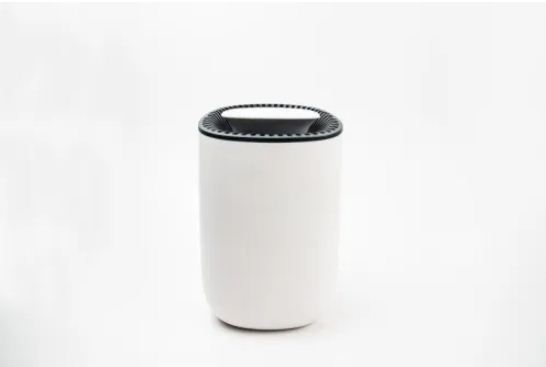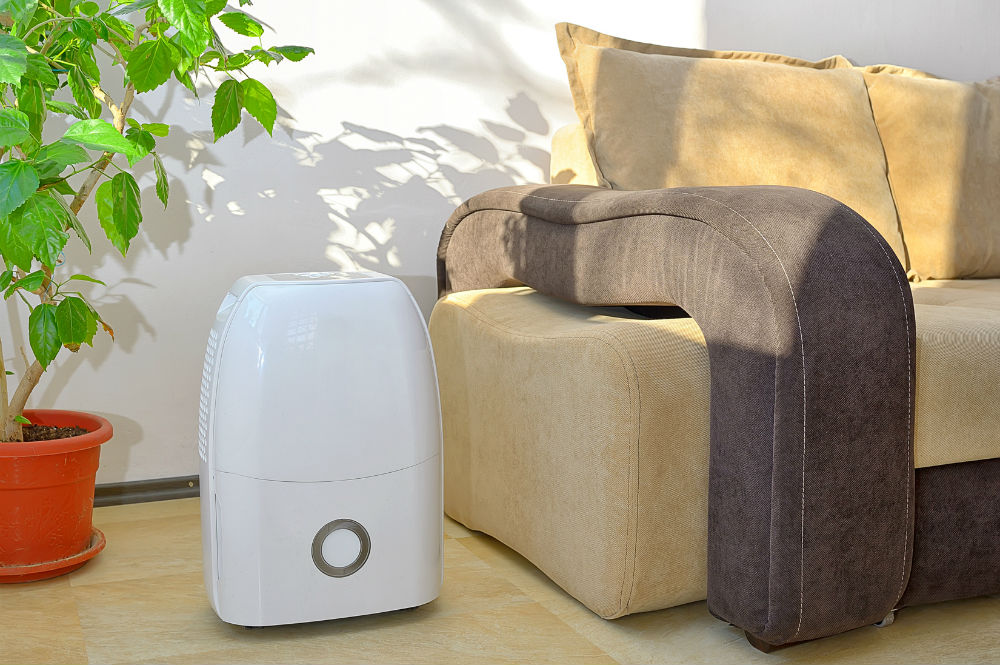Do you have too much humidity in your home, apartment or basement?
You may be considering buying a fan or a dehumidifier to solve this problem.
There are benefits and drawbacks to each type of product.
In this brief guide we will answer your questions and provide you with the facts and advice you need to make the right choice for your particular needs.
We’ll look at the advantages of using a fan + heater vs. a dehumidifier to dry the air in your entire home and discuss how a bathroom dehumidifier compares with an exhaust fan.
Though a fan will pull fresh air in from outside and push it into your home or basement, a dehumidifier operates by actively eliminating dampness and then accumulating and draining the moisture away.
In most cases, using a dehumidifier is a more reliable way to remove excess humidity from your home.
Key Differences
The primary difference between a dehumidifier and a fan is how they work.
A fan circulates outside or inside air throughout a room in your basement, home or apartment.
Usually, using a fan to dry inside air requires opening a window or door to blow inside humid air out and the pull drier outside air into your home.
A fan is an inexpensive way to make sure that your home is well ventilated and to replace stale, humid air inside.
Fans are less complex than dehumidifiers, too – and generally anybody with a bit of DIY skill understands how to use and install one.
Dehumidifiers, on the other hand, are a bit more powerful – and more complicated.
Dehumidifiers work by pulling humid air into the device, where it condenses and removes the humidity using cold condensation coils. The dried air is then forced back into the room using a fan.
In general, dehumidifiers also don’t rely on outside air – they dehumidify the air in the room without requiring you to open a window or door.
Fan: Pros And Cons

Fans have been used to ventilate houses for almost 100 years, and they’re an economical way to be sure that the air in your basement, home, or even crawl space is clean and well-circulated.
They are also very simple to install.
Fans are normally fitted inside of vents or windows, which push air from outdoor into your home. This works well and can be added to any wall.
A dehumidifier, on the other hand, has to get its water collection bucket emptied frequently and may need to be connected to a drain so the water can be pumped off.
Fans do not need this kind of routine maintenance or installation.
If the issue in your house is humidity, then a fan may not fix it – or at least, not all of the time. This is because while you may have dried air being pushed inside, the fan does not remove moisture from the atmosphere – but a dehumidifier does. So if you’ve got damp conditions outside, a fan just won’t cut it.
A fan can also get clogged. If it gets clogged with debris, dust, etc., this can cause your fan to get overworked which can burn out the motor.
The worst disadvantage of a fan is that it will cause your condensation issue to become worse if you live in a hot/humid environment and use an AC to cool your residence. If you use a fan to push in warmer air in from outdoors, or perhaps into a crawl space, the air inside your room will be cool due to the AC system.
This means you’ll have hot air from outdoors hitting cooler air inside, which will make your humidity problem even worse.
If you use a dehumidifier, you won’t face this problem.
Dehumidifier: Pros and Cons

Dehumidifiers have been used in many settings and industries for years, and they have become a popular method to remove moisture from basements and houses.
A dehumidifier works by literally removing water from the air and draining it away using a collection bucket or a hose drain.
This provides you peace of mind that the water from your inside air is actually being removed from your house – rather than just concealed or just moved around.
Another excellent feature of a dehumidifier is that you can precisely control the level of humidity in your residence.
Several units include an integrated humidistat which tracks air moisture level and runs the dehumidifier until the level reaches a preset limit. This means you can set your humidity level precisely at 50%, 70%, or some other level you need.
Although a dehumidifier seems like a complex machine, they’re actually low maintenance. They require some general cleaning and upkeep around two times a year, but mainly you just need to run them correctly and drain the water away.
A dehumidifier is different from a fan in that it has to drain the water it removes away. This can either be accumulated in a bucket that’s manually eliminated and drained, or removed using a pump to push waste water through a hose and into a drain.
This means you’ll want to set your dehumidifier up in a location close to a drain point – or be ready to empty the bucket regularly – an issue if you are going away on holiday.
Dehumidifiers may also be noisier than a fan (but this really depends on the unit). While it’s possible to buy a noise-free unit, the most powerful ones use fans, too.
Generally, dehumidifiers take up more space than a fan. A bathroom dehumidifier can wind up using the floor in what is usually a small room.
The Right Solution for Your Home
If you need to eliminate moisture from your home efficiently and during all seasons, a dehumidifier is an ideal choice.
While a fan can take less space and provide you with fresh outdoor air, it can not eliminate moisture and, as mentioned above, a fan can actually make your moisture problem worse if live in a house with air conditioning.
I’m a degreed ME (mechanical engineer) who is passionate about machines of all kinds. I created MachineWonders.com as a way to connect with others who love machines like me – or need help choosing one for their needs, application, or situation.



